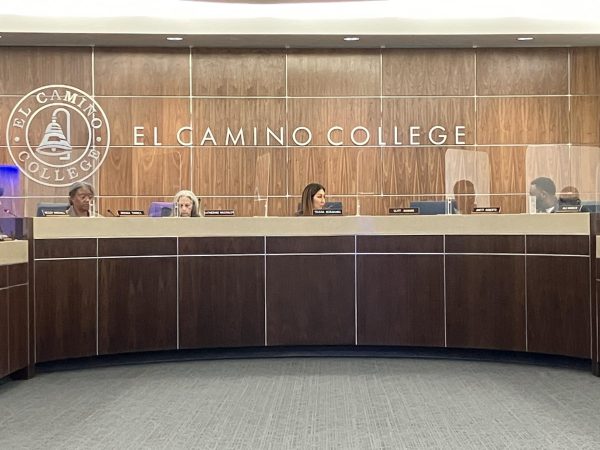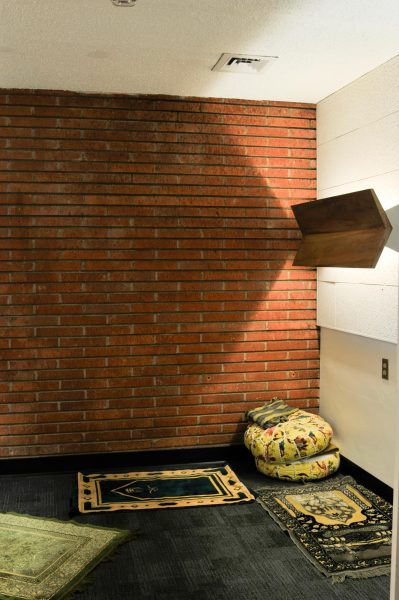New potential medical malpractice law would allow more access to the judicial system
Victims of medical malpractice cases may receive more money in pain and suffering if an effort to change a current compensation cap is approved this year.
The Fairness for Injured Patients Act (FIPA) intends to raise the non-economic compensation cap for victims of medical malpractice cases, as the Medical Injury Compensation Reform Act of 1975 (MICRA) has had the cap at the same $250,000 level since its founding.
With a higher cap set for individual and family victims of medical malpractice cases, it can be more likely for these individuals to hire attorneys on a contingency fee basis.
Although FIPA is eligible for Californians to vote on during the November 2022 election, many families face the effects of MICRA at this time.
Medical Negligence in California
Arta Lahiji, a primary care physician, lost her father due to medical malpractice while receiving care from John Vincent Flynn, a nursing professor at El Camino College who is currently on leave, at Providence Little Company of Mary Torrance back in 2014.
Lahiji said her father, Mansoor Lahiji, was on feeding tubes while recovering from subdural hematoma surgery, but his feeding tubes were out of place. Flynn removed the tube and replaced it back into Mansoor Lahiji twice, but placed them into each of his lungs causing tension pneumothoraxes which lead to his death on Oct. 2, 2014.
A lawsuit was later filed against Flynn, the hospital and two other physicians. Investigations at the hospital where Flynn worked found that he was incompetent with his use of feeding tubes.
“What’s really hard is that my father’s death was preventable, and John Flynn decided to use my father as a guinea pig or his trial or practice patient… on something he clearly wasn’t competent to do,”Lahiji said. “The fact that it was preventable was heartbreaking and what the hospital did to our family afterwards, was even worse.”
Medical negligence can occur at any hospital, even in nationally ranked hospitals like Cedars-Sinai in Los Angeles.
Charles Johnson, a father of two originally from Atlanta Georgia had relocated to California with his wife Kira and their first son Charles Johnson V. In April 2016, the Johnsons went to Cedar-Sinai to welcome their second son Langston into the world. Although Langston was born healthy, Kira’s health declined after the birth.
“[Hospital staff] take us back to recovery and as I’m sitting there… just relaxing, letting her rest, the baby is resting, I look down and I see blood coming from the catheter and I bring [it] to the attention of the doctors and the nurses,” Johnson said.
Although the staff asked for computed tomography (CT) scan to be performed “stat” at 4 p.m. that day, Kira’s health continued to decline. Hours began to pass as Johnson pleaded for hospital staff to examine his wife and for the scan to take place.
“Six o’clock comes, no CT scan. I’m like ‘What is going on’ and they’re like ‘Oh, it’s coming, it’s coming, it’s coming sir, don’t worry about it,’ and by seven o’clock she is shivering uncontrollably,” Johnson said.
It wasn’t until after midnight that Kira was taken back for surgery, with the scan never taking place and the hospital staff going into surgery with less information than they could have had.
“When they took [Kira] back for surgery, they opened her up and there were three liters of blood in her abdomen… in which it accumulated and she suffered needlessly and it was too late, and she coded and she never came out of the operating room,” Johnson said.
It wasn’t until the Johnsons got back Kira’s medical records that they saw the negligence of the hospital.
“[The hospital] actually noted in her medical records that she was classified as a surgical emergency at 6:44 [p.m.] They didn’t take her back for surgery until 12:30 a.m,” Johnson said.
What MICRA Does
The current MICRA cap affects individuals who are not working at the time, which include children, retired elderly and stay-at-home parents.
Individuals who do not receive economic damages during similar lawsuit cases are only valued at only $250,000, according to the Consumer Attorneys of California (CAOC) website.
For the Lahiji malpractice lawsuit, Lahiji’s father wasn’t working at the time of his death and the family couldn’t apply for economic damages. This was because of MICRA, the non-economic damages they were awarded were reduced to $250,000.
“It was a law that was made 45 years ago that basically says, ‘We can ignore what the jury said in terms of your family’s non-economic damages,’ which was $1.5 million, ‘We can ignore what they say and reduce it to $250,000,'” Lahiji said in an article written by The Union.
Some families of medical negligence victims cannot afford lawyers for medical malpractice lawsuits except on a contingency fee basis, where attorneys pay all litigation costs and get reimbursed those costs and paid for their time only if the trial is won.
Although this method allows individuals access to the justice system, medical malpractice cases can cost up to $100,000 dollars of the total $250,000 reward and could take a long time until lawyers are able to see their costs returned and pay earned, according to the CAOC website.
If a plaintiff were to win the case, MICRA also caps contingency fee amounts that lawyers can receive.
Lawyers accepting contingency fees for damages in medical negligence cases can only receive 40% of the first $50,000 awarded, 33% of the next $50,000 and 25% of the next $500,000, according to California Legislative Information.
Jaime Keeton, a defense lawyer and one of Lahiji’s lawyers during the trial portion of the lawsuit, said if lawyers paid malpractice lawsuits, they would be paying the costs over the next few years and if the case is won but appealed, it could take even longer for lawyers to see their litigation costs returned and their salary earned.
“The hard costs make it difficult because you might have to take out loans to get that money paid and knowing that the success rate for medical malpractice cases is so low, that is a huge risk,” Keeton said.
Lahiji said that her first lawyers dropped out of the case when seeing how much the case would cost compared to how small the reward would be due to MICRA. She would be given two months to find Nora Hovsepian, the lawyer who took over the case.
“[My lawyer] even said ‘I do these [$250,000] cases because I believe families who are limited to the $250,000 deserve some kind of justice, but I can’t do it unless you fund the costs of litigation,'” Lahiji said.
Although Lahiji was able to pay the $83,000 of costs for the lawsuit and achieved a feeling of justice when Flynn and the hospital were found liable for her father’s death, but feelings of guilt continue to surround Lahiji as she thinks about other families who have dealt with malpractice but are not able to afford lawsuits.
“I get so passionate about it because sometimes I just feel so guilty because we had our day in court because I could afford it? That’s not fair,” Lahiji said.
Other Issues With MICRA
Individuals who do survive medical malpractice can face trouble getting their economic damages due to different parts of MICRA.
A part of MICRA gets rid of the collateral source rule, a rule that makes negligent healthcare providers not responsible for paying for their actions. By defendants showing that victims receive benefits like social security or health benefits from jobs, defendants and their companies don’t have to pay what victims are suing for, according to the Corsiglia, McMahon and Allard Law website.
“I, actually as the wrongdoer, get the benefit of all of your benefits which means that my medical malpractice insurance company doesn’t have to pay,” Nicholas Rowley, attorney and creator of FIPA said.
Rowley also brings up the periodic payment prevision of MICRA and how if an individual does win a case and is paid economic damages, the healthcare provider’s insurance company can ask to pay small amounts of the verdict to the plaintiff over time.
“Periodic payments mean that any judgment is deferred, so if you win a multi-million dollar verdict because that is what you deserve, it’s going to be paid little bits at a time with the insurance companies hoping that you die,” Rowley said.
There is also a problem with juries in medical malpractice cases, as jurors are not told about the MICRA cap when in trial or when awarding money to the plaintiff.
“The jury doesn’t know that’s going to get cut to $250,000 when they leave the room,” Rowley said.
Racial disparity is also a part of the MICRA battle, as Rowley said that African American, Hispanic and Asian groups are more affected by medical malpractice than white patients.
“The ballot isn’t just about like, ‘oh boy, this is between doctors and lawyers,’ that’s not what it’s about, it’s about the civil rights of healthcare patients and families,” Rowley said.
FIPA Enacted
MICRA faced potential change during the November 2014 election in California, as proposition 46 in one part was to raise the cap of non-economic damages in medical malpractice cases to over $1 million but was defeated with 66.67% of voters saying no, according to Ballotpedia.
“I get that California wants to control costs of malpractice, but you’ve put a cap that is so low in today’s dollars that you’re completely obstructing a large portion of the population from access to the judicial system,” Lahiji said.
If FIPA is enacted, the act would adjust the non-economics cap based on inflation since MICRA’s establishment.
This adjustment would happen annually based on the Consumer Price Index published by the United States Bureau of Labor Statistics, according to the official FIPA website.
This increase in the cap will allow individuals to find lawyers who are able to take the case and risk the amount of money needed to fund the case.
“It increases the cap to $1.2 million, which is a reflection in inflation,” Rowley said.
For contingency fees, although the percentages a lawyer gets per amount of money awarded will not be changed, FIPA will allow lawyers to get percentages of amounts adjusted for inflation each year. So instead of 40% of the first $50,000, it will be 40% of the first amount recovered based on the amount for that year.
“By indexing the cap for inflation, it makes the contingency fee situation feasible. An attorney can afford to take on those costs and that risk if the award is higher,” Carmen Balber, executive director at Consumer Watchdog said.
Although attorneys will be able to get an appropriate amount of money for their time, Rowley said that attorney’s fees will also be distributed based on what the judge of the case thinks.
“What FIPA does is it doesn’t increase the money lawyers are going to make, what it does is it makes it so that judges approve attorney’s fees. So there will be some cases where if a lawyer doesn’t have to do that much work, the lawyers not going to make that much money,” Rowley said.
There are other changes that FIPA would not only implement if enacted but also remove as well.
“Periodic provisions are gone. Doesn’t apply anymore. Collateral source rule is put back into effect so that The Doctors Company and other insurance companies up to the wrongdoers don’t get the benefit of your benefits if you’re the victim,” Rowley said.
FIPA will also not only inform juries about the non-economic damage cap, but it will also allow them to give individuals and their families a higher verdict in cases of catastrophic injury and wrongful death.
“So a person who goes into a healthcare provider, or a hospital or a [Health maintenance organization] and comes out disabled because of permanent nerve damage or permanent brain damage, that’s a catastrophic injury,” Rowley said.
The number of medical malpractice cases that are created each year will be reduced due to FIPA, as a provision to protect doctors will be added to make sure that these cases have a confirmed basis to be created.
“That means that any lawsuit that’s going to be filed has to have a certificate of merit and an expert witness who’s approved the case already,” Rowley said.
Possible Opposition
Although the change could occur if FIPA is enacted, Balber knows that it will face challenges just like what happened in 2014 with proposition 46.
“We know from past experience that the medical malpractice insurance industry, as well as the physician and hospital lobbies, will spend millions of dollars, tens of millions of dollars, last time this [kind of act] was on the ballot it was $60 million, to oppose this,” Balber said.
One group that is against the change of MICRA is the California Allied for Patient Protection, a group of insurance companies, medical groups and local governments.
Many of these groups that are a part of California Allied for Patient Protection (CAPP) donated money against proposition 46 according to the Ballotpedia website.
“So all these people, this is the stone wall of people representing organizations that have deprived California patients and families of their civil rights, their right to a jury trial, the stone wall of people making sure that juries are lied to in every medical negligence case and not told about the cap since 1975,” Rowley said.
When reaching out to Lisa Maas, Executive Director of California Allied for Patient Protection (CAPP), Molly Weedn, who works with Maas, gave The Union a fact sheet and a connected website regarding CAPP’s position on FIPA and their reasoning against its approval.
During an interview with The Union, Maas spoke about and from the fact sheet, saying that if FIPA were to be passed, annual government costs will increase between tens and hundreds of millions of dollars, access to healthcare would be reduced and lawyers would see an increase in the amount of money they can make, causing an increase of cases.
CAPP has also researched information into why a higher cap would not be a good thing for California, saying how MICRA doesn’t cause restrictions for individuals to access the legal system, premiums have fallen since the caps enactment due to insurance company competition and an increase in the cap would increase healthcare costs for California families.
Other organizations like Consumer Attorneys of California said that claims from medical organizations such as CAPP are not accurate.
According to the article “The truth about CAPP, MICRA and protecting patients,” no reputable studies for certain claims have been used and insurance companies are making mass amounts of profit due to fewer payouts on malpractice claims.
Even though FIPA could face failure during the election, Johnson, who is a chairman of FIPA, believes things could be different, as this legislation is more focused on medical negligence compared to proposition 46.
“This bill is much more robust and it really does a lot more to address the actual issues [of MICRA]. One thing that kind of gets lost in the failure of the previous legislation is that they did a lot of things, like they wanted to push drug testing for doctors and a lot of stuff that really just weren’t related to the true issue and so we have taken a lot of that out,” Johnson said.
Original Purpose of MICRA
Although MICRA has an effect on the amount of money victims or families of victims of medical malpractice cases can receive, the act’s original purpose was to decrease doctor premiums.
MICRA was created in 1975, during a time when increases in doctor’s malpractice insurance was occurring. In order for insurance companies to make a profit, they charge doctors insurance premiums, according to the article “A History of MICRA” linked on the Consumer Attorneys of California MICRA page.
Argonaut Insurance of Menlo Park, the national leader in malpractice insurance at the time, experienced millions of dollars lost in the stock market’s downfall in 1973 and 1974. The company later announced that it would cancel its group coverage of 4,000 doctors in Northern California and Nevada on May 1, 1975, and would raise individual doctor premiums by up to 384%.
Later that same year as doctors went on strike for lower premiums, Governor Jerry Brown signed MICRA into place, a measure that reduced and capped non-economic damages in medical malpractice cases, supposedly reducing doctor premiums by 18% to 24%, according to the MICRA article.
Although this was MICRA’s original goal, it did not reach its goal and premiums would continue to rise over the next 13 years.
It wasn’t until 1988 that Proposition 103 would pass, allowing the California State Department of Insurance to regulate medical malpractice premiums and cause premiums to reduce by 20% within three years of the proposition’s signage, according to an article by Consumer Watchdog.
Because of this change back in 1975, the cap on non-economic damages has stayed the same for over 46 years.
“The fraud and lies were that bypassing this law, medical malpractice insurance rates would go down and doctors would not leave the state because there was this big crisis. So doctors were going to leave the state of California, depriving people of their access to healthcare. But it was untrue and it was insurance company propaganda,” Rowley said.
Change from Experiences
Although these tragedies can occur in one’s life, these individuals still have the capabilities to make a change in the world from it.
Johnson himself was able to meet with congress members working on maternal legislation and publicly spoke in favor of the legislation to Congress in Washington D.C. Eventually, this piece of the legislature would pass.
The Prevented Maternal Deaths Act of 2018 was passed on Dec. 21, 2018, in which each state will have a maternal mortality review committee to collect and analyze pregnancy-related and analyzed deaths data that occurs and for these committees to come up with solutions to help combat these issues.
“Bills are hard to get passed, particularly in a jacked-up political environment and then, particularly on the first go around. It’s something that almost never happens, so to be able to get this done was a very important first step and it was just that, it was only a first step,” Johnson said.
Johnson is currently helping to pass more legislation through congress, working on what is known as the Black Maternal Momnibus Act of 2021. Johnson said this collection of bills all focused on maternal healthcare, one of which is named the Kira Johnson Act which honors Johnson’s late wife.
“It’s going to do a couple of things that I am really proud of, it’s going to award funding to community-based organizations that are working for Black maternal equity, it’s going to provide funding specifically to training unbiased racism for all healthcare settings,” Johnson said.
On November 30, 2021, the Protecting Moms Who Served Act of 2021 was signed into law by President Biden, becoming the first bill of the Momnibus to be signed into law.
Although each of the bills are at different parts of the review process, Johnson said these bills are important for the healthcare of not only Black mothers but all mothers as well.
“By addressing these issues for Black women will subsequently fix them for all women, because they are the ones that are most disproportionately affected, so that’s the important piece of this,” Johnson said.
For Rowley and creating FIPA, he says he could repeat the stories of medical negligence 100 times with what he has seen in his career. He feels that it is his responsibility to put up the money and start the change that the law needs for families and victims of medical negligence.
“So what we have is a situation where medical negligence has become the third leading cause of death in the state of California. Because there is no accountability. The quality of care is horrific,” Rowley said.
If FIPA were to face the same fate as proposition 46, Rowley said he will continue to fight MICRA for as long as he has to.
“If we don’t win, I’ll spend the money and get it on the ballot again, I’m not going to stop. Maybe I’ll get paid on some of my cases and make $100 million next year and I’ll put $50 million into this fight, I’ll do whatever it takes because again, I’m just a kid who grew up without any money, so I got everything I need,” Rowley said.
Editor’s Note’s:
- Added infographic for more information on April 20, 2022, at 11:37 p.m.
- Corrected grammar errors on April 22, 2022, at 6:03 p.m.







